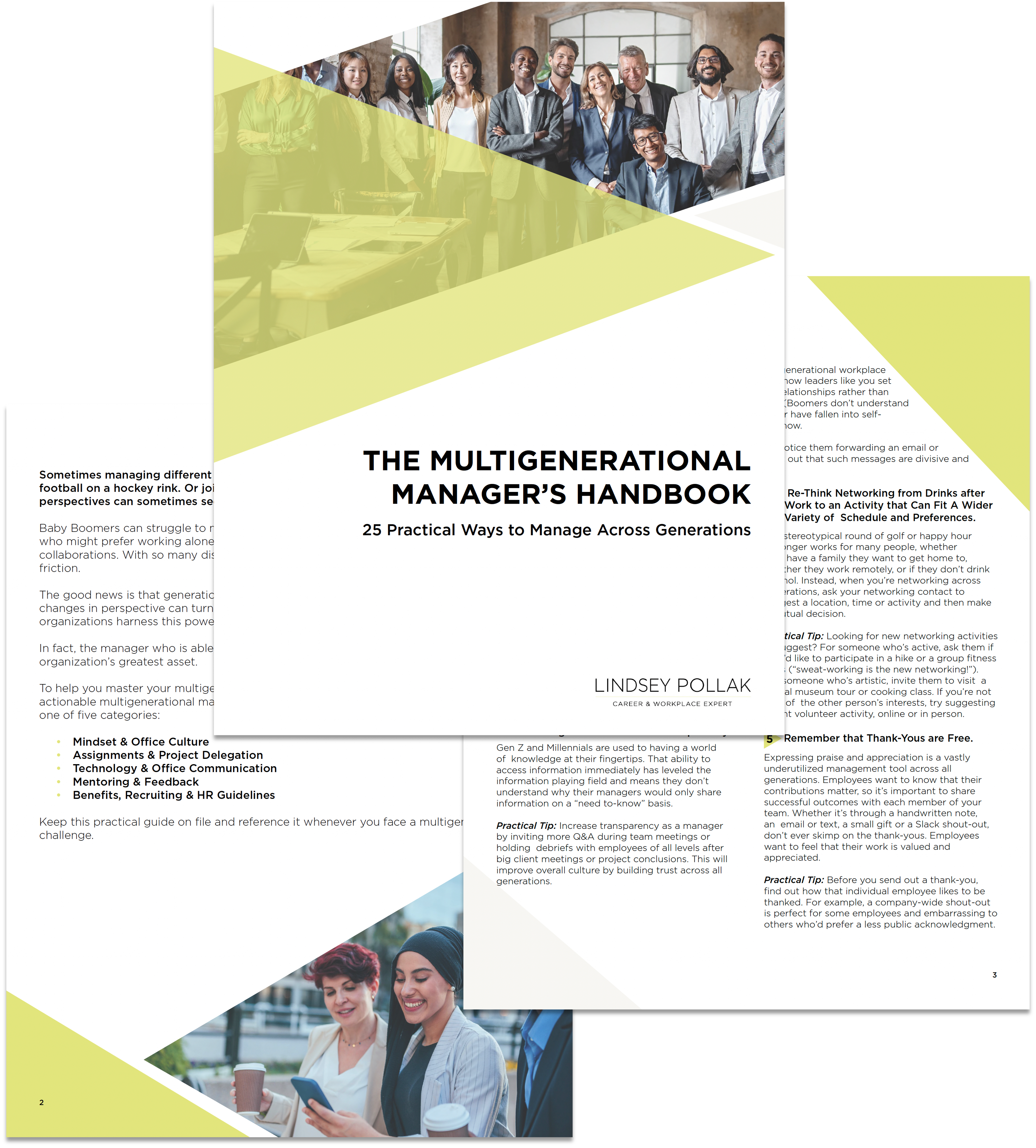Most of us tend to hang around with people who are “like us,” that is, who share commonalities in background, personality, interests, and yes, age. In the workplace, this can be problematic, as it can lead managers to jump to conclusions or make decisions about employees that they don’t even realize they are making, based on beliefs about generations or cultures.
The first step to overcoming these biases is to realize you have them and then make a conscious effort to rethink our snap judgments.
Here are five articles that help explain unconscious bias and explore how it applies to the multigenerational workplace.
Realize That Unconscious Bias Is Not a “Fault”
“A major step is to accept that unconscious bias exists—and that you’ve got it. At any given moment, you’re faced with 11 million pieces of information, but your brain can only process 40 of those bits at a time. So it creates shortcuts. Just acknowledging that you have unconscious bias is the first step to doing something about it.” — Read more at Generations at Work.
Consider How Being “Bias-Aware” Can Inform Your Decisions
“When people are bias-aware, they are able to act with less bias without fixating on being unbiased. Bias-aware people can do this by course-correcting their actions and decisions using knowledge about their own biases. For example, someone might say, “I believe that I’ve selected the best people on this panel, but know I’m biased toward men. Let me look one more time with that in mind and see if the outcome changes.” While the decision may not end up changing, the process of being honest and nonjudgmental about one’s own bias adds both accountability and intentionality.” — Read more at Quartz At Work.
Remove Unconscious Biases By Creating Opportunities for Different Generations to Create Connections
“Conduct generational information awareness/sharing sessions. A great way to get people to work together across the generations is to provide them with an opportunity to educate each other about each generation’s own history, characteristics, milestone events, culture, language, and norms. Rather than talking at your people, have representatives from each age-based generation put together programming to educate people and facilitate dialogue.” — Read more at American Management Association.
Focus on People, Not Preconceived Notions
“Leaders may be responsible for managing groups, but leaders ultimately lead individuals. And every individual is different. So what is the best way to lead a Millennial employee? Start by forgetting his or her age. Ignore stereotypes. Ignoring sweeping generalizations. And then focus on the person. For example, Millennials may appreciate positive reinforcement (who doesn’t?), but what matters is how each individual responds to recognition. Some people enjoy public praise. Others cringe when made the center of attention. Some people might appreciate just a quiet word of thanks. Your job is to find out what makes the greatest impact for each individual, and provide that.” — Read more at Inc.com.
Recognize That Your Multigenerational Team Might Need Help Overcoming Stereotypes, Too
“Different generations still harbor stereotypes about one other [according to a new report from CompTIA, a technology association]. About two-thirds of baby boomers think younger workers aren’t as loyal and nearly 60% think younger workers feel entitled. Slightly more than half of millennials said they see older workers as too rigid and set in their ways, and almost half of Gen Xers think older workers aren’t as technologically savvy.” — Read more at HR Dive.
Lindsey Pollak is the leading expert on millennials and the multigenerational workplace, trusted by global companies, universities and the world’s top media outlets. A New York Times bestselling author and keynote speaker, Lindsey began her career as a dorm RA in college and has been mentoring millennials — and explaining them to other generations — ever since. Her presentations have audiences so engaged that, in the words of one attendee, “I didn’t check my phone once!” Contact Lindsey to discuss a speaking engagement for your organization.
